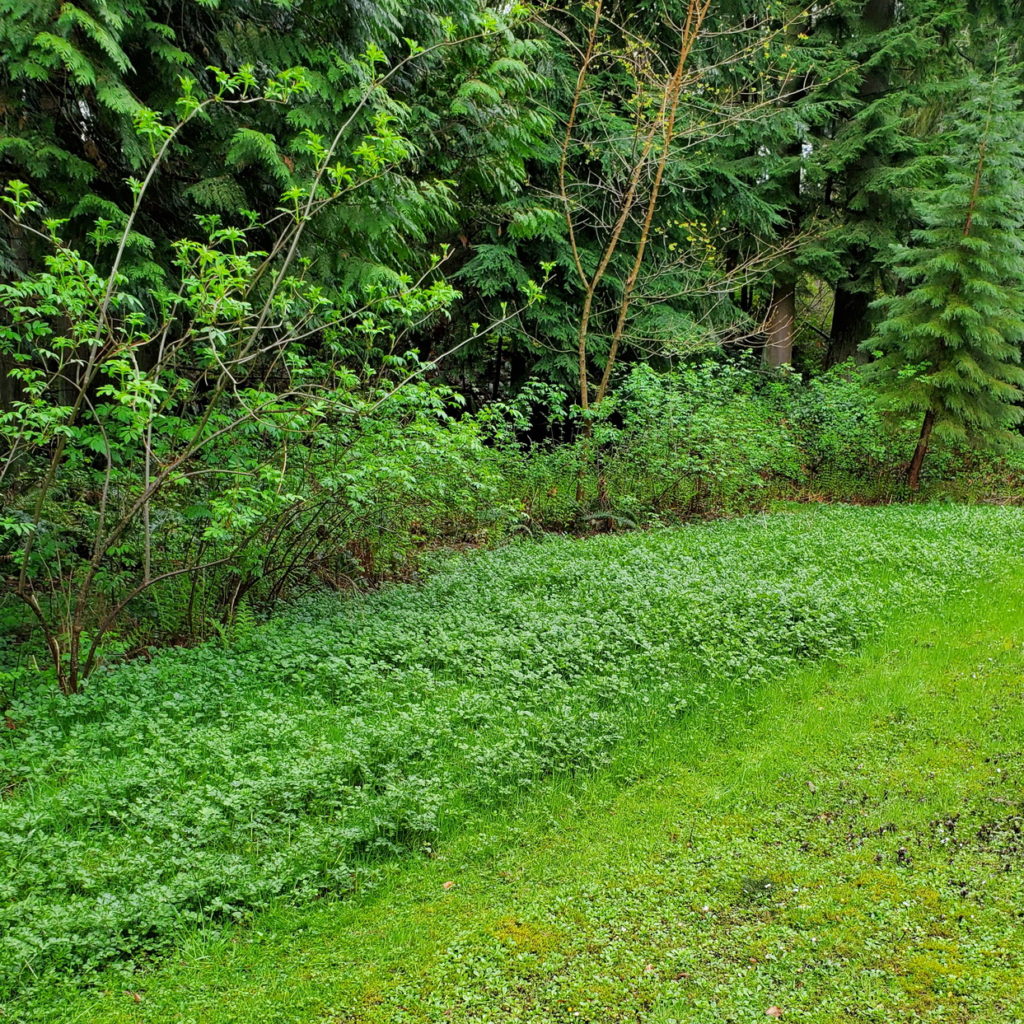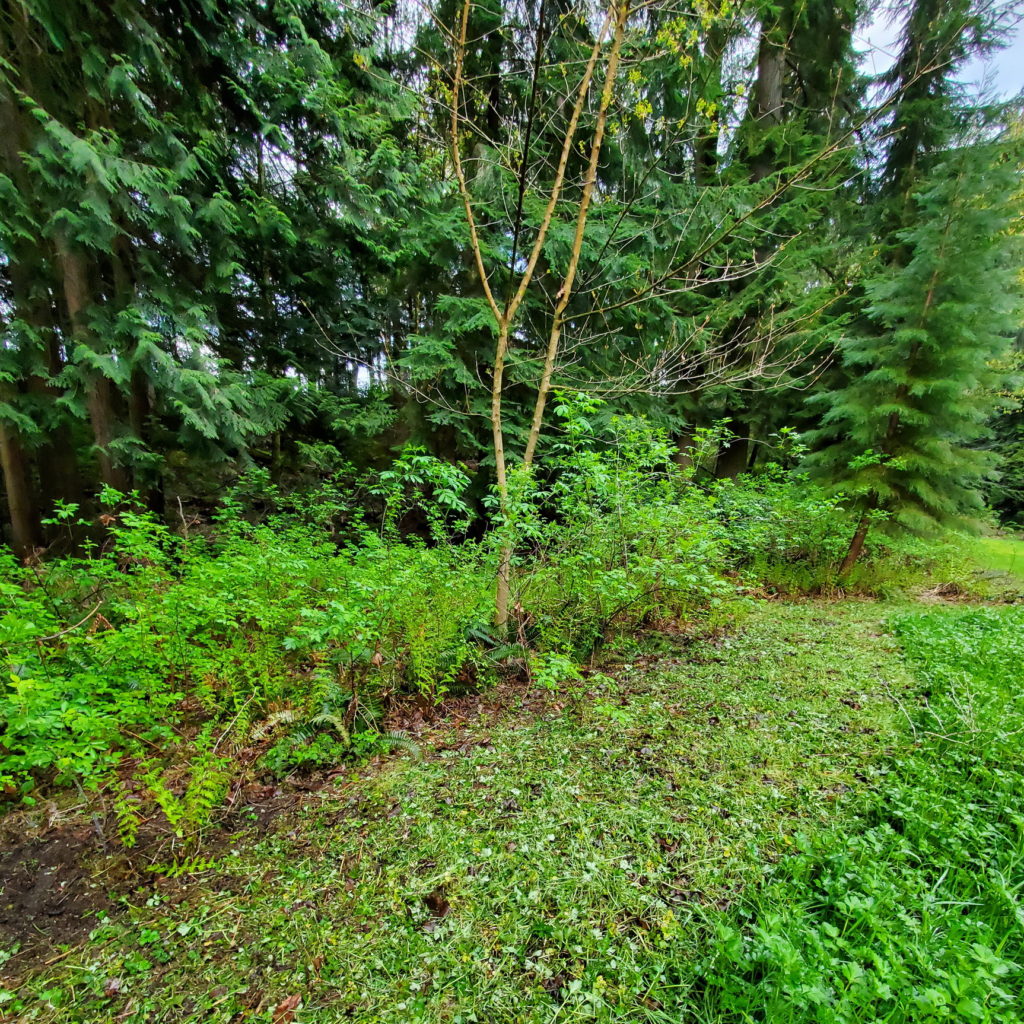Last year, I began “weed-whacking” a few “bad edges” to see if it would help prevent the weeds from recolonizing adjacent forested “good areas.” I have some preliminary opinions on the pros and cons of this practice but let me begin with some background information.
The public park where I do restoration work has five individual “forest islands” separated by ornamental beds, mowed turf, and various hardscapes. Together these patches of forest add up to about 20 acres that are mostly free of invasive plants after 15 years of restoration. In the past, before year-after-year of staff reductions, the several miles of edges around the forest islands were maintained by City crews using gasoline-powered string trimmers. However, in the last few years, without regular maintenance, many of the edges have filled with weeds.

To keep invasives in bad edges from recolonizing good areas under canopy, I tried cutting them with a grass whip which worked well on soft weeds like Creeping Buttercup but wasn’t practical for large areas. Recently, with the encouragement of the City’s Park Department, I began weed-whacking more bad edges with (I’m a little embarrassed to admit) a rechargeable battery-powered string trimmer.

There will always be edges to maintain, but I’m gradually trying to decrease their size using the Bradley Method. Ideally, at some point in the future, it will be possible to maintain the edges using just a grass whip and hand weeding, but for now, the overall area of the bad edges (about 1.5 acres) favors the power weed whacker.
Now some pros and cons:
Pros
- Allowing weeds to continue to grow controls erosion better than uprooting them and leaving large areas of bare, disturbed ground, even if they are mulched.
- Mulching with brown cellulose (e.g., wood chips) also reduces erosion, but green manure (e.g., the tops of cut weeds) adds nitrogen to the soil instead of depleting it.
- Living plants (including weeds) contribute more to soil fertility than the decomposition of dead plants (here), because the sugars and other organic compounds they secrete from their roots support soil microbes.
Cons
- To minimize seed production, the areas have to be weed whacked every couple of weeks for almost six months.
- Grasses and other invasives that spread by runners or rhizomes continue to spread, hence the need for “Bradley Lines” to separate good areas under canopy from bad edges.
- Some invasive weeds like Herb Robert and Nipplewort still produce seeds, even when kept trimmed below 6” in height, and a string trimmer can send those seeds flying into adjacent good areas.
- Diminutive early flowering weeds like Shepherd’s Purse have already bloomed by the time I start weed whacking.
Do the pros outweigh the cons? I’m optimistic, but it will take a while to see if weed whacking really helps prevent invasive plants from spreading into adjacent areas of restored forest.